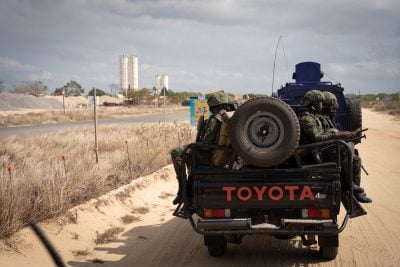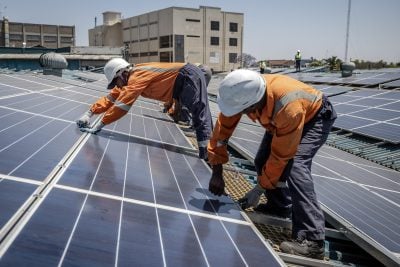South Africa and Russia are the two biggest platinum-producing countries in the world. During the Brics summit in Durban, the two countries signed a cooperation agreement on finding new markets and maximising revenues from the platinum group metals. Is this the first step towards a cartel to influence supply and therefore prices? M J Morgan discusses.
At the Brics summit in Durban in March, the host nation – home of the most valuable mineral reserves in the world worth $2.5 trillion (R23 trillion) according to a 2010 Citibank report – was naturally looking to forward the development of this vital sector.
An unanticipated development to this end was the signing on the 26th March of a Memorandum of Understanding (MOU) between South Africa and Russia regarding Platinum Group Metals (PGMs). The agreement sets out a framework for cooperation towards seeking and creating new markets and coordinating policy between the two countries that dominate the sector, with fuller details to be agreed at a later date.
Sergey Donskoy, Russia’s Minister of Natural Resources, told Reuters, “The main goal we have set for ourselves is the formation and search for new markets and, accordingly, coordinate our efforts so that we can jointly ensure maximally effective sales of raw materials on the market and implement new projects to process those raw materials.”
This is a surprising move by the two governments, one that may alarm buyers, but that may transform the industry. However, the two governments’ ability to manage the market effectively will not be easy and the devil will be in the yet-to-be-decided detail.Both nations were keen to stress that price manipulation was not the MOU’s aim. South African Mines Minister Susan Shabangu said, “The issue of pricing has not been discussed.” Her Russian counterpart Donskoy said, “We do not plan to influence prices. We do everything in line with WTO (World Trade Organisation) rules.”
Minister Shabangu emphasises that the two countries were not trying to create a cartel but instead were seeking to “influence” rather than control the market. Both ministers’ remarks appear disingenuous. This is particularly so in light of Donskoy’s remark to Bloomberg that “it can be called an OPEC”. The oil producers’ cartel lowers or raises production quotas to adjust prices. “Our goal is to coordinate our actions accordingly to expand the markets. The price depends on the structure of the market, and we will form the structure of the market,” he added – suggesting that price is very much a concern. He elaborated that such coordination could be expected to involve managing supply as well as through measures such as export controls and quotas.
There do not appear to be legal barriers to the creation of a cartel-like organisation but specific acts that result, such as export controls, could potentially breach international trade rules.
Value chain
The South African government believes that platinum is one of the 10 commodities that offer the greatest opportunity for higher value exports through increased domestic beneficiation. The country possesses the world’s largest reserves of the valuable element and is looking to further harness its value chain in the autocatalytic converter, diesel particulate filter and jewellery sectors. There are also possibilities in the growing hydrogen fuel-cell industry.
The urgent need to seize a greater share of the mineral rich nation’s value chain is clearly apparent. Accountants Deloitte calculate that aggregated revenues from mineral sales in South Africa in 2010 were $24.5bn (R227bn). But of this only $9bn (R86bn) was earned through mineral processing. The remainder represents raw material sales – and billions lost in opportunity cost.
Russia and South Africa together account for some 80% of the world’s PGM reserves and nearer 90% of production. South Africa alone mines about 70% of all platinum, 80% of all rhodium, and Russia 40% of all palladium. The move appears to be aimed at managing excess supplies of the precious metals.
Further talks are planned. “As for more detailed mechanisms and organisational issues related, among other things, to export, we will discuss this in Moscow this summer within the framework of the inter-governmental working group. The Central Bank and our companies – Norilsk Nickel – which are operating in this market will join us,” the Russian minister stated.
JSE-listed Anglo American Platinum alone mines 40% of the world’s platinum and has operations in South Africa and Zimbabwe. The company’s parent, Anglo American, has other mining interests in Russia. Similarly, Russia’s platinum and nickel giant Norilsk Nickel has nickel operations in South Africa and Botswana as well as its nickel, platinum and copper concerns in Russia.
These firms’ delegates were present at the Brics summit. Also represented in Durban was Renova Group, which has PGM processing interests in Russia and signed ferroalloy strategic agreements during the conference with South African firms.
Recycling is a matter of concern to both parties. Despite a shortfall in platinum supply, relative to demand, of 400,000 oz (and double that for palladium), prices have not rallied. This is, at least in part, a result of recycling volumes which account for 20-25% of supply.
The search for cheaper alternatives to PGMs may not have yielded results so far but concerns about disruptions to supply, post-Marikana, and higher prices will motivate manufacturers to explore alternatives.
China and the EU are respectively the first- and second-largest consumers of PGMs and will be concerned as to how this development may affect them. So will Johnson Matthey and BASF, two of the biggest players in autocatalysts, who will be watching developments with bated breath. The former has already seen a new supply agreement with Amplats erode $35m worth of commission. Given South Africa’s vast dominance in PGMs, it is not clear that they even need Russia to assert their influence over this market. However, Russia’s relative strength in palladium, the possibility of technology transfer to add beneficiation value and other political and strategic considerations may explain South Africa’s motivation.
Zambia’s $45bn nationalisation experiment
A report from the Eunomix consultancy estimates that Zambia’s nationalisation efforts cost the country some $45bn in lost mining rents. According to Mining Weekly, the company studied World Bank data from 1970 to 2010 and concluded that the decision to nationalise in 1969 – with copper at peak prices and production at 700,000 tonnes – led to mineral rents falling faster than prices. As a result, the country earned only $15-$20bn over the course of the 40-year experiment, instead of the $65bn that could have been earned if production had continued at the same level of output.
Zambian Mines Minister Yamfwa Mukanga announced in April that whilst there will be no return to nationalisation, the government will be taking a minimum stake of 25% in new mining projects and possibly 35% in future projects. Currently, state owned ZCCM Investment Holdings holds 10-20% in most mining companies.
President Kaunda nationalised 51% of the copper industry. Prices rose threefold in under a year to $1.50/lb then retreated sharply following the oil shock of 1973, when Opec reacted to the Arab-Israeli war by embargoing Israeli supporting nations. A second oil shock following the Iranian revolution in 1979 pushed the Zambian economy into a tail spin that saw two decades of falling living standards. From a peak of 750,000 tonnes of output in 1973, production fell to 249,100 tonnes in 2000. Zambia Consolidated Copper Mines (ZCCM), the nationalised copper concern, lost vast sums of money following insufficient investment and lower prices. Zambia became one of the most indebted countries in the world, crippled by its dependence on copper earnings.
President Chiluba was elected in 1991 and, under pressure from donors, the Privatisation Act was passed in 1992. ZCCM’s privatisation was finalised in 2000 and has been a contentious subject since. Last year, copper output fell by 5.4% to 844,986 mt from 892,792 mt in 2011, according to the Bank of Zambia. The country is aiming to produce 1.5 mt a year by 2017 as new and expanded projects such as Lumwana and Greenfield Trident come online. Around $3bn in investment is expected in the sector over the next three years. Additionally, railway companies in the country are investing $1.5bn in new infrastructure to enable freight to move from trucks to rail.
The growth in copper production is causing alarm with prices at an eight-month low.
Want to continue reading? Subscribe today.
You've read all your free articles for this month! Subscribe now to enjoy full access to our content.
Digital Monthly
£8.00 / month
Receive full unlimited access to our articles, opinions, podcasts and more.
Digital Yearly
£70.00 / year
Our best value offer - save £26 and gain access to all of our digital content for an entire year!
 Sign in with Google
Sign in with Google 


